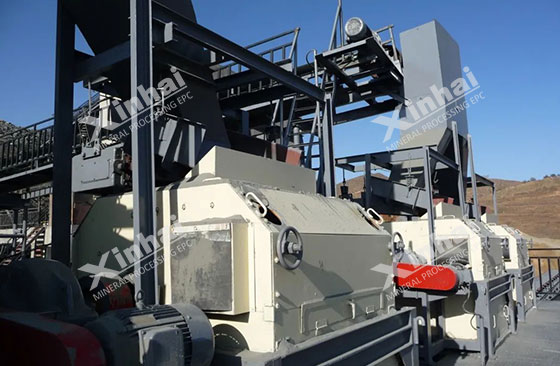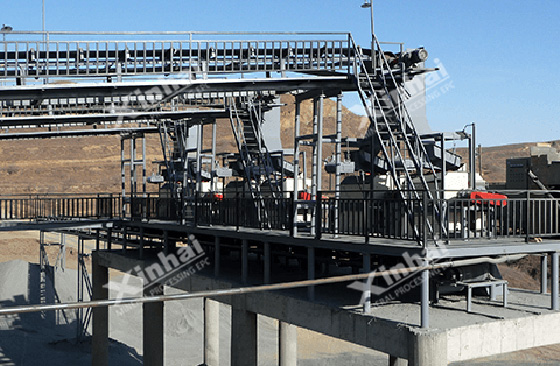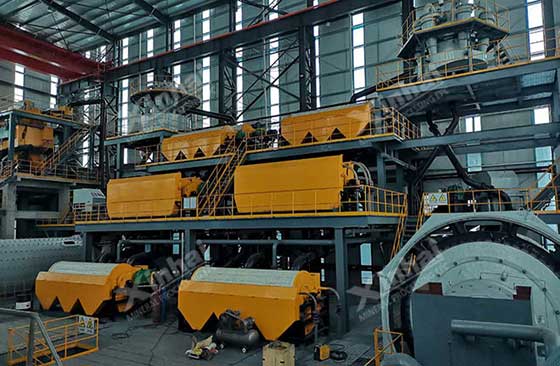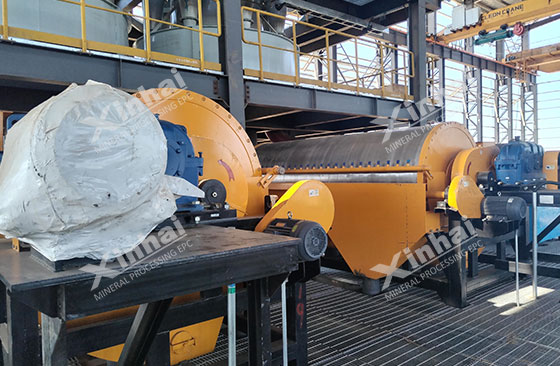With the growth of global demand for the steel industry, the development and utilization of iron ore is an important way to meet the industry's demand for iron. The iron ore beneficiation process mainly relies on magnetic separation technology, which can not only improve the grade of magnetite, but also reduce the waste of ore resources and environmental pollution. It is an important method for iron ore beneficiation. This article will deeply explore the application and optimization of magnetic separation technology in iron ore beneficiation, including the principles, applications and optimization methods of different types of magnetic separation equipment.
Use the table of contents below to navigate through the guide:
01Basic principles of magnetic separation technology

Magnetic separation technology is to separate minerals according to their different magnetic characteristics in a magnetic field. Minerals can be divided into three categories according to their magnetism: strong magnetism, weak magnetism and non-magnetism. Among them, magnetite is a strong magnetic mineral, which can be obviously attracted in a magnetic field and separated from other gangue minerals such as quartz and feldspar. The magnetic separation process achieves the best separation effect by adjusting parameters such as magnetic field strength, magnetic field uniformity, mineral particle size and flow rate, thereby improving the recovery rate and grade of magnetite.
02Types of magnetic separation equipment

Magnetic separation equipment is classified according to factors such as the type of ore, magnetic field strength, and sorting method. There are mainly strong magnetic separators, weak magnetic separators, wet magnetic separators, and dry magnetic separators.
1. Strong magnetic separator: Mainly used to process ores with strong magnetism, especially suitable for magnetite, ilmenite and other minerals. Common equipment includes: strong magnetic drum magnetic separator, magnetic drum magnetic separator. Strong magnetic separators can further improve the sorting effect and ore grade under wet conditions.
2. Weak magnetic separator: Used to process low-grade ores or minerals with weak magnetism, especially suitable for ores containing trace magnetic components. Common equipment includes drum weak magnetic separators and drum magnetic separators.
3. Wet magnetic separator: This type of magnetic separator is sorted in water medium, which can effectively reduce wear and pollution. Wet magnetic separators are mainly used to process ores with finer particle sizes, especially the sorting of fine-grained magnetite. The use of wet magnetic separators can effectively reduce dust pollution and improve the environmental protection of the mineral processing process, and is particularly suitable for large-scale mineral processing plants.
4. Dry magnetic separators: This type of equipment does not require the use of water media, and achieves mineral separation through air flow and magnetic field. Dry magnetic separation can be used for ores with low humidity or not suitable for wet magnetic separation. Dry magnetic separators can be used in areas lacking water sources, but their equipment and operating costs are relatively high.
03How to optimize the magnetic separation process?

Optimizing magnetic separation technology can improve the efficiency and recovery rate of iron ore beneficiation, ensure the ore grade, and reduce energy consumption and pollution. The following are common optimization methods:
1. Optimize magnetic field strength and uniformity: The magnetic field strength will directly affect the magnetic separation effect. When the magnetic field strength is too low, the magnetic minerals cannot be effectively separated. When the magnetic field strength is too high, the gangue minerals may be adsorbed, reducing the separation effect. The uniformity of the magnetic field is also an important factor in optimizing the magnetic separation process. A uniform magnetic field can ensure that the minerals are uniformly stressed in the magnetic field, thereby improving the accuracy and efficiency of magnetic separation.
2. Optimize particle size and separation particle size range: Ore particle size is an important factor affecting the magnetic separation effect. Too coarse ore is difficult to separate, while too fine ore will cause a decrease in recovery rate. Optimizing the separation particle size can further improve the separation efficiency and recovery rate, and is an important part of optimizing the magnetic separation process.
3. Optimize the configuration and process of magnetic separation equipment: In actual production, the configuration of magnetic separation equipment and the design of magnetic separation process are directly related to the beneficiation effect. Combining different magnetic separation equipment, such as strong magnetic separation + weak magnetic separation, wet magnetic separation + dry magnetic separation, such a combined magnetic separation process can better adapt to the characteristics of different ores and improve the separation effect. The multi-stage magnetic separation process can gradually remove gangue minerals and improve the grade and recovery rate of iron ore.
4. Optimization of operating parameters: Reasonable adjustment of the speed, feed rate, slurry concentration and other operating parameters of the magnetic separation equipment can effectively improve the separation effect of the ore and reduce energy consumption and equipment wear. For example, the reasonable adjustment of the ratio of speed and feed rate can reduce production costs while ensuring separation efficiency.

The above is an explanation of the principle of magnetic separation technology, equipment classification and process optimization. With the continuous development of technology, the magnetic separation process will tend to be intelligent and automated, promoting the continuous development of the iron ore beneficiation industry. Optimizing the magnetic separation process, developing new magnetic separation equipment and applying new technologies will greatly improve the level of iron ore beneficiation.


 marketing@ytxinhai.com
marketing@ytxinhai.com  0086 13810327080
0086 13810327080 






































































































 CHAT
CHAT MESSAGE
MESSAGE




